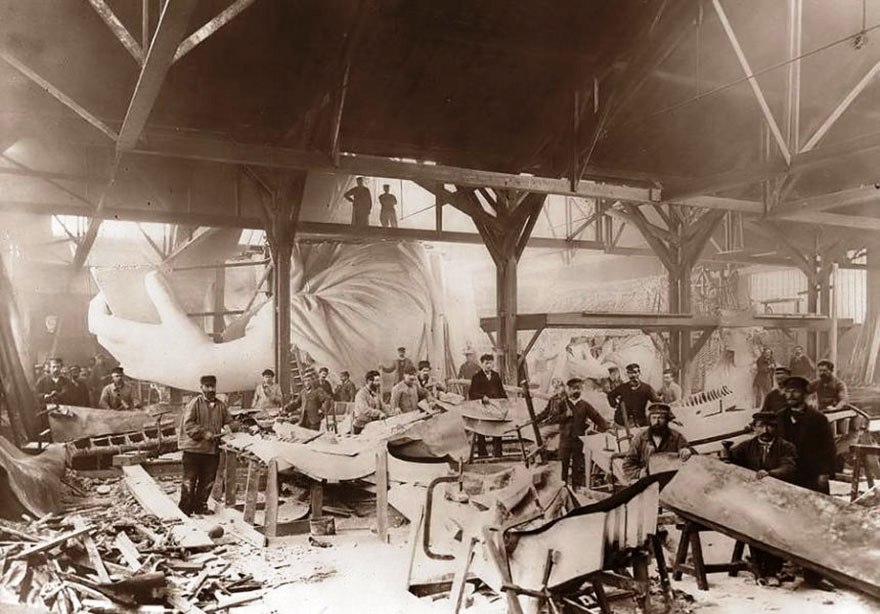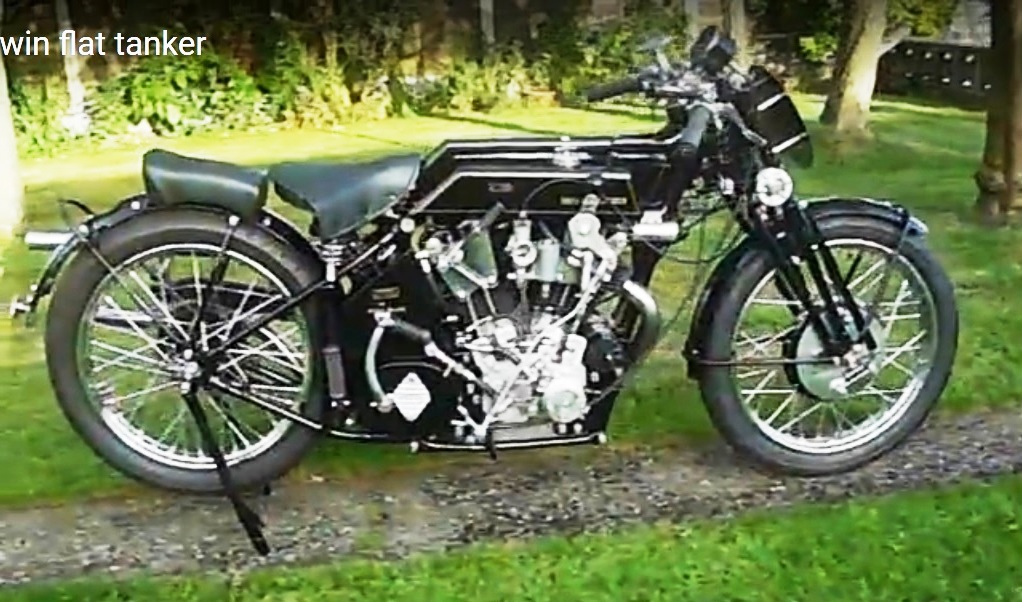Chat 13
Quiz 12 answer it is a pissoire correct answers from John Goodall, Mick Dughan, Mick Leach, Pat Robotham, Don Eades and Trevor Shakespeare. Trevor said there is a Victorian urinal, on Great Barr Street, Digbeth, Birmingham. Typical solid cast iron Victorian engineering. You can see it and more Birmingham examples here: Victorian Urinals Also John Renwick says there is a public urinal which maybe located in Burton on the corner of High Street and Station Street. If I am correct on the location the building in the background with the angled door was occupied in the 1960's and 70's by Martin’s Bank, later to become Barclays. Excuse me for a moment ....... speaking of pissoires, I need the bathroom, too much tea. ����
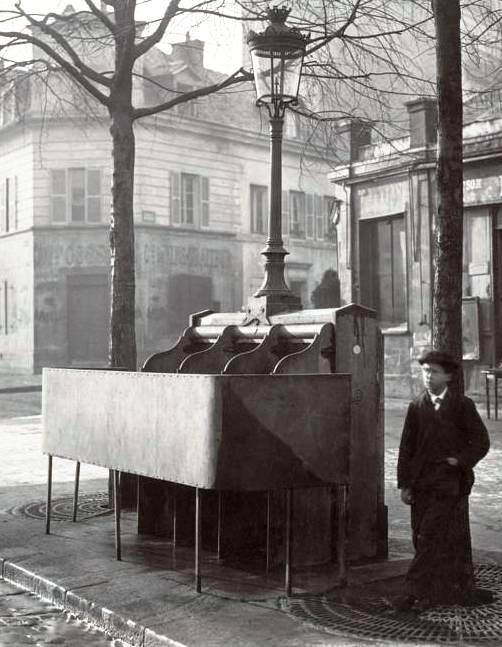
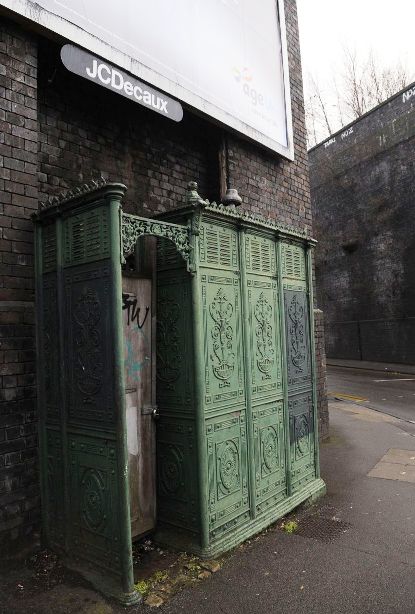
| French Pissoire-Paris | Victorian version-Birmingham |
Another First Bike:
This one is from Ken Lay, Northampton
VMCC Section member.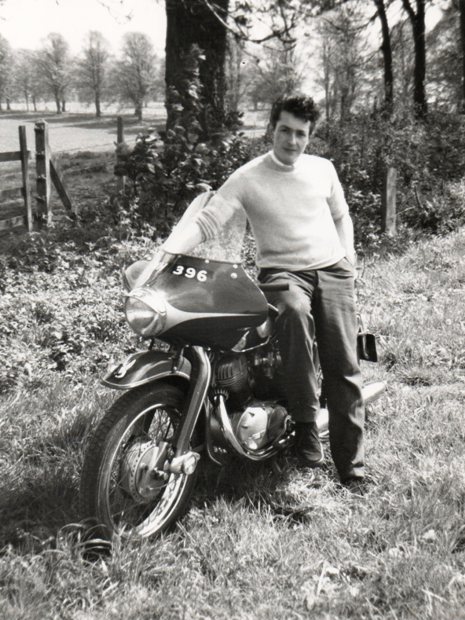
Here is a photograph of my first motorcycle a 1957 NSU MAX
bought second hand at the beginning of January 1959 from Norman
Stokes motorcycles on the Wellingborough Road in Northampton.
Although quite heavy for a 250 it was quite quick and a pleasure
to ride and very well made. The Avon Droopy Snoot fairing was
added by myself and sprayed to match, it did not come with the
motorcycle. The photograph was taken at a lunchtime when out for
a short ride away from the office with my mate Peter Carter who
had a 350 AJS. Believe it or not I was not quite 17 at the time
that I purchased the bike, my birthday being on the 20th of
January 1959.
Please no comments referring to rich b..stard, how could he
afford that at his age etc etc. I worked hard and saved up.
Ken Lay
John Goodall Posted:- My First New Bike.
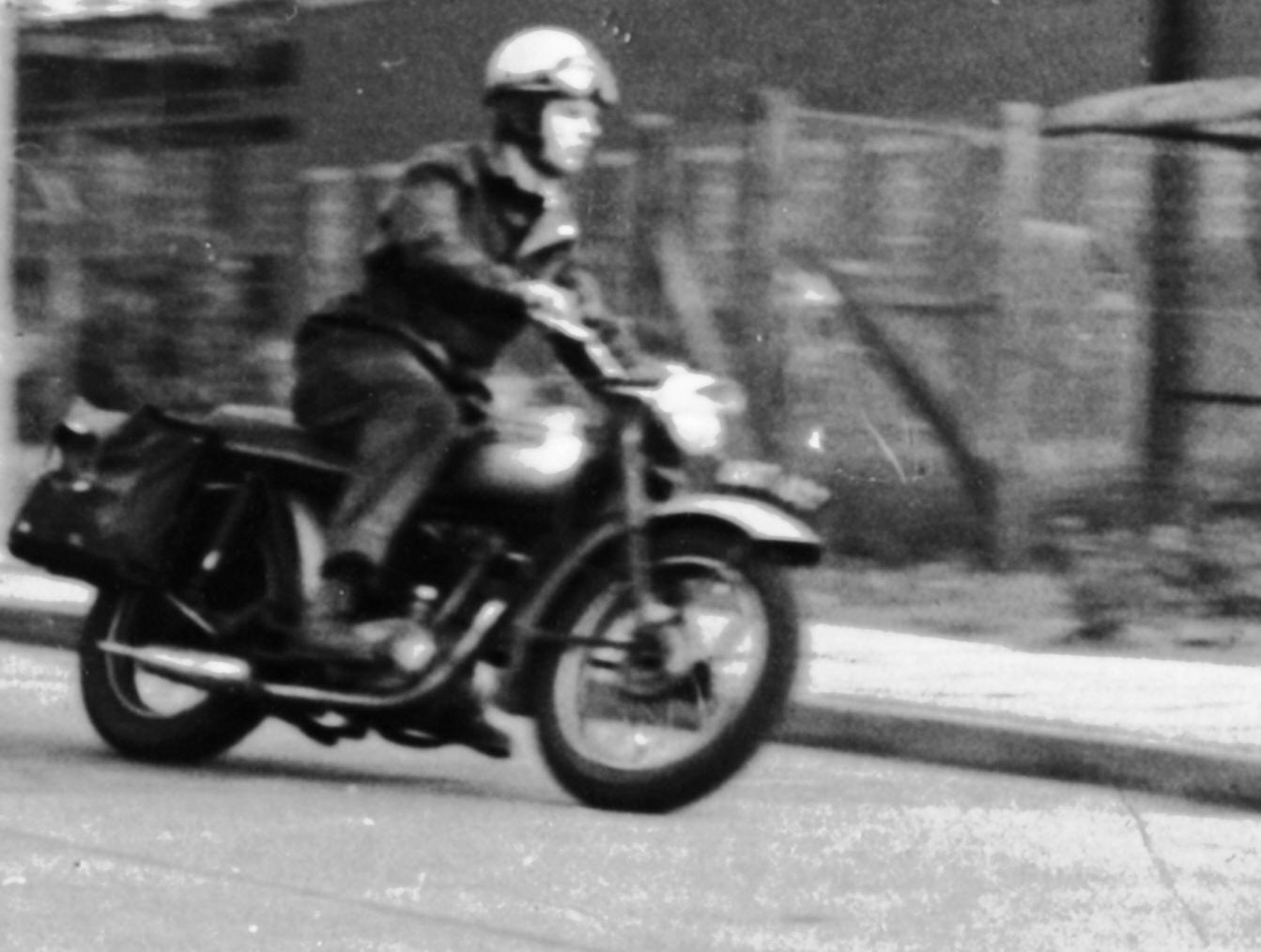
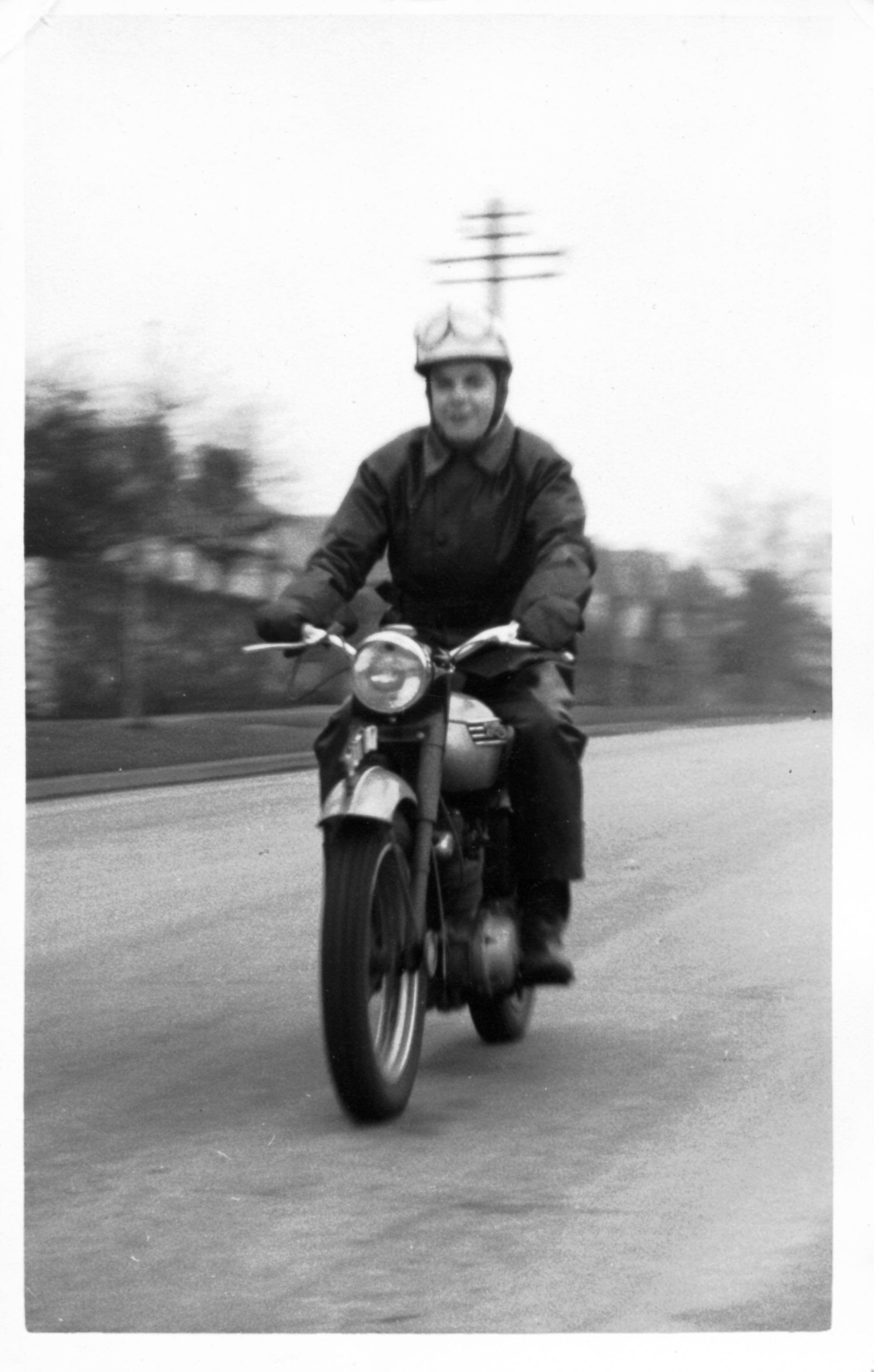
I mentioned in a previous piece that my
first motorcycle was a James Comet of 98cc with Villiers engine
and gearbox unit with two speed handle bar control. It went very
well apart from whiskering plugs very regularly which eventually
put me off two strokes and so I was soon planning what to buy as
my next machine. With regular income from my five year
apprenticeship pay and payment to my mother for my upkeep I had
barely enough left out of the wage I was earning to save, or buy
a new bike except on “Hire Purchase”. To give an idea of my pay
at the time when I came out of my apprenticeship in 1959 I had
been earning £4-19-6 per week, so it was even less back in
1956!!
It would be somewhere around this time I had met up with Glyn
Hall and Trevor Mear and looking back this may well have had an
influence on me riding out to Slater and Adams at Market Street
in Ashby De La Zouch, because we used to fly models in Hood Park
at Ashby. It was now August 1956 and they actually offered a
part exchange price on the James and so I signed on the line to
buy a Brand new Triumph Tiger Cub a 199cc four stroke
in Metalic Silver and black with the newly introduced swinging
arm rear suspension for the 1957 model year. It was usual
for next year’s model to be available In the September of the
previous year and so towards the end of the month it was ready
for collection. I recollect the list price was just over £157 in
1956. I felt very proud riding home on “OUT 107” as it felt so
lively and smart compared to the James with a lovely bark to the
exhaust, to my ears anyway although it could be quite muted when
ridden gently as when running in. No plug whiskering either??
(I lived in Ashby de-la-Zouch until I was 20 and Slater and
Adams were in a little shop near the top of Market Street, next
door to what was then The British Legion. I think the
mechanic was a tall man called Bernard who always wore a beret,
nice bloke. My brother John knew him better and may be
able to confirm this. Eddy.)
It was not without problems and I took it back to Slater and
Adams a few times with difficulty selecting gears and sometimes
jumping out of gear after selection. This was in the first six
months of ownership and eventually they got in touch with
Triumph at Meriden and it was arranged for me to take it to the
factory for attention. I got there at 08.30 hrs in the morning
as requested, but was dismayed when they said come back at 16.30
hrs?? What to do until then, I caught a bus into Coventry and
went to see my Uncle Bill and Aunt Ethel who lived on the
outskirts, until the time to return to pick the bike up. It was
ready with the gearbox stripped and rebuilt they told me, but
although better it was still not perfect and something you had
to learn to live with. This would most likely not be tolerated
today and was symptomatic of what went wrong with the British
Motorcycle Industry.
It was however a very lively and fairly quick little bike that
handled reasonably well and sounded good. I did a lot of miles
on it averaging 15,000 miles a year travelling to work and model
flying events as well as social activities. The only accident I
remember having on it was after flying at a Model event up in
Chester, riding back home with a friend Keith Rodgers carrying
my model on the pillion we entered Upper Tean approaching
Uttoxeter and a long queue of traffic was in our lane. So
overtaking gingerly I was getting near the head of the queue
when an unseen car coming the opposite way overtook a stationery
truck on the opposite side of the road without any thought on
what might have been coming his way and with nowhere to go I hit
the brakes hard and dived between two cars. The road in Tean in
those days was highly cambered and it had been raining, so the
bike skidded and went from under us at fairly low speed. There
were car tyres squealing and a bang or two. When things came to
a halt I looked round and saw a Humber Snipe front bumper just a
foot or so from Keith’s head and with me and the bike behind
another car. With no injuries except to pride and clothing we
pulled the Cub onto the pavement to appraise the situation. The
footrest was bent up and was jumped on to straighten it and then
I noticed the forks were twisted and the model was wrecked. I
did what I used to do with push bikes sticking the front wheel
between my knees and twisting the bars back until they appeared
straight .We then rode home feeling very lucky? Funnily enough I
never had any more trouble with the front forks after that, or
maybe I ignored it? I did have to re spray the petrol tank and
replace the seat cover and handlebar grips to tidy things up.
I was by now courting my future wife Carol and went to the
pictures one night parking in George Street next to the cinema.
When we came out the bike had been moved from the parking place
by some form of low life and parked on the footpath. That was
not all however, because I had a ticket for illegal parking and
the battery had been stolen as well as a handlebar mirror and
some tools. We got home OK with the emergency start ignition
setting after calling at the Police Station to report the theft.
I think I had to pay the fine, but heard no more from the
Police. The bike was used to go the National Model Flying
Championships at RAF Waterbeach in 1957 and the following year
to RAF Hemswell (thanks for reminding me Andy?) along with
Trevor and Glyn. I don’t think I ever went camping again
after this trip to Hemswell either as I started to suffer with
my back aching and a distaste for baked beans!! One of the
anomalies the Cub had was after a period of almost flat out
riding it would lose power and puther out smoke from the
exhaust. If you then went steady for a while it would
gradually clear and off you could go again, I never fully
understood why this happened. I had a couple of theories
on it, but has anyone else got a reason why this would happen?
The Cub which I look back on fondly was part exchanged in 1959
with the big ends just beginning to rattle at 30,000 miles (a
common fault and they usually went more quickly) for the
Velocette Viper obtained from Macton Motors in Derby which was
better able to carry a pillion passenger. The only other new
bike I ever bought was the Honda Deauville again in Metalic
Silver bought in 2005, but that might make a future story. John
Goodall
Suggestions for Pat Robotham Brake Light Electrical Problem:-
I think Mick Duggan may have explained the problem, similar suggestion to yours Eddy. Have connected light directly to battery and it works, will take off brake light switch which is a real bugger to do. Thanks. Pat
Pat later posted:-
Following information and tips from Mick
and Ed have now replaced brake light switch with the original
one which I had kept dismantled first and cleaned up. The modern
replacement one fitted 2 years ago was the problem with a
massive 800 ohm resistance. No idea why. Shoddy cheap rubbish I
guess. The cleaned up old one is 2 ohms. In addition found a
high resistance wiring connection which has also gone, so
success and thanks for advice and explanation of strange
electrical goings on.
If you are wondering why I did not just replace it at the
outset. I have to say that although most of the Ariel
range are dead easy to work on, the very late four strokes,
56/59, fell foul of the so called "stylists" who added a
mountain of unnecessary metal, making some things very hidden.
The brake light switch being one such. To replace, it goes like
this. Seat Off 4 bolts. Battery carrier off one bolt and two
screws. Oil tank nearly off 2 nuts, 1 bolt and finally horn off
2 very hard to get at bolts/nuts. Oh then the final two
nuts/screws to get the switch off itself. The whole thing is
like doing gynecology in a bottle inside a glove box. I stabbed
myself in the thumb once and in the back of the hand once. Still
it now works. Thanks for advice. Stay sane. Pat
John Renwick Posted:-
With reference to Pat Robotham’s brake light problem.
This may not be the problem Pat has on his Ariel as there
is no mention of a replacement pattern rear light recently but
if the light has been changed earlier the latent problem may
have been there and only become apparent after wear & tear due
to vibration. However my problem is probably worth sharing with
others, if having to install a replacement rear light using
pattern parts.
I experienced a similar fault on my AJS 18CS. I had fitted
a new pattern rear light. When I first installed the bulb it
illuminated on only one filament but if I manually “wobbled” it
would illuminate on both. If I rotated the bulb 180 degrees the
fault shifted to the other filament. Note I had to hold the bulb
due to the offset with both location pins on the bulb. I
concluded the contact points in the light body did not align
accurately with the bulb connections. A quick fix bodge was
apply extra solder to the bulb to extend the rotational length
of each contact point. It worked , but only just. After a while
of running the bike the bulb connection became unreliable but
the bodge proved a point. Note the slots in the bulb housing
were also a bit generous on clearance to which enabled the bulb
to be rotated
The main cause of the problem was the pattern light insulator
which has “ears” to locate the insulator in the bulb housing was
out of alignment with the holes locating the wired connections.
In the end I removed the insulator and after scratching around
in the garage for some suitable material I used a red plastic
lid, copied the basic shape of the removed insulator but changed
the rotational position between the holes supporting both wired
connectors and the two external ears. With the new handmade
plastic insulator the rear light & brake light have both
continued to remain illuminated when switched on. Note when
undertaking initial electrical tests with either light switched
on there was always a 6 volt feed to each connector. The fault
turned out to be a mechanical fault. A quick check for Pat to
undertake would be to make a temporary wire connection from each
bulb connection in the rear light to the removed bulb, of course
with a suitable earth connection.
I hope the above is useful, either for Pat and/or others in
future.
Brian Shackleford took a trip to Malta:
April last year my wife and I visited
Malta for a fortnights holiday. Part of the itinerary was an
invite to ride a vintage bike in the 'Historic Motorcycle Club
of Malta' 30th aniversary.
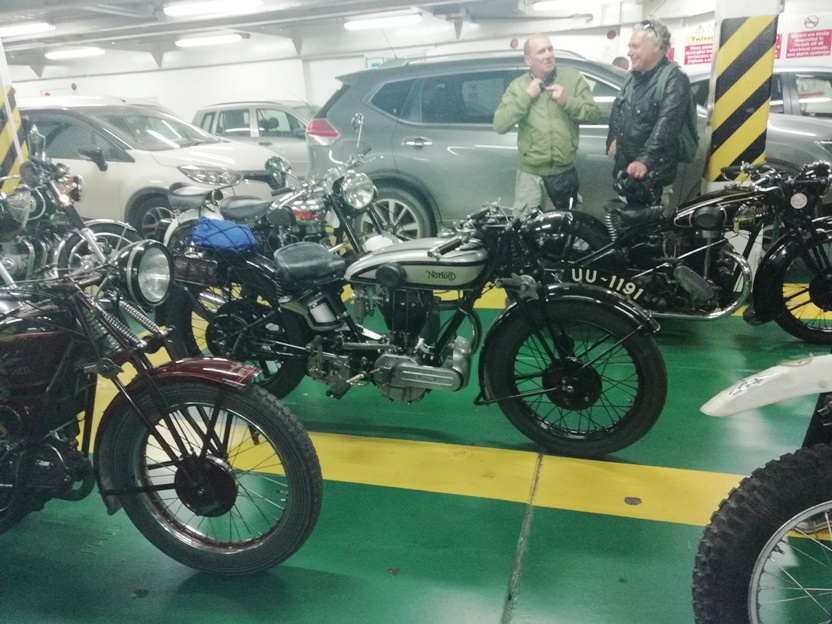
On the ferry
Arriving in Gozo the group travelled to the capital , Victoria,
known to the locals as Rabat. All the bikes were parked together
and we had a guided tour of the ancient Citadel.
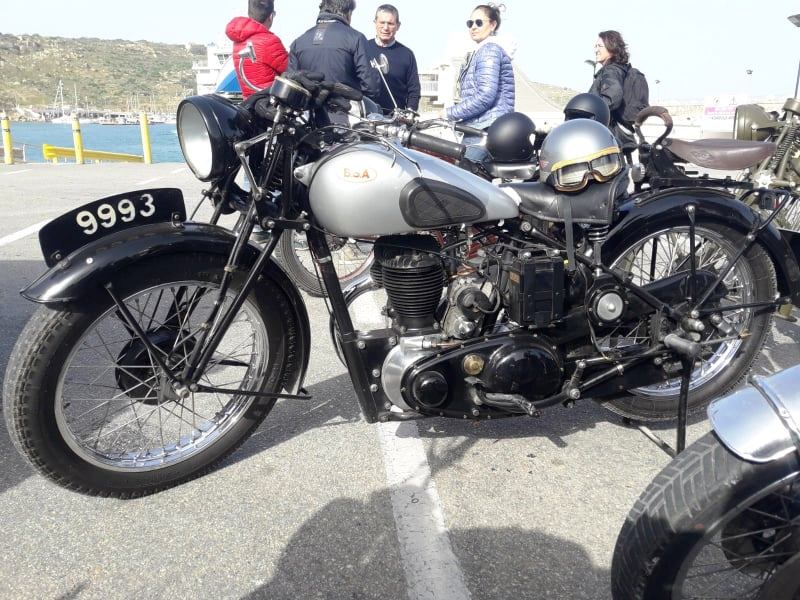
My steed for the day
On leaving Victoria we did a Gozo tour and after a decent ride we arrived at 'Dahlet Qorrot' a small bay on the south east of the island. (Dahlet = entrance) so 'Entrance to Qorrot'. The road down to the bay was horrific especially for old bikes with no suspension. It was a reminder of how all the roads were when I lived there in the 1970s. It actually wasn't a road more like 100% potholes with no relief. In fact it was that bad the senior management (wife) had to get off the bike that we had been loaned by my dear friend Pierre Cianter (BSA M20 rigid/girder) and walk the last half a mile. But it was worth it because on arrival there was a wagon waiting for us laden with good Maltese food and drinks.
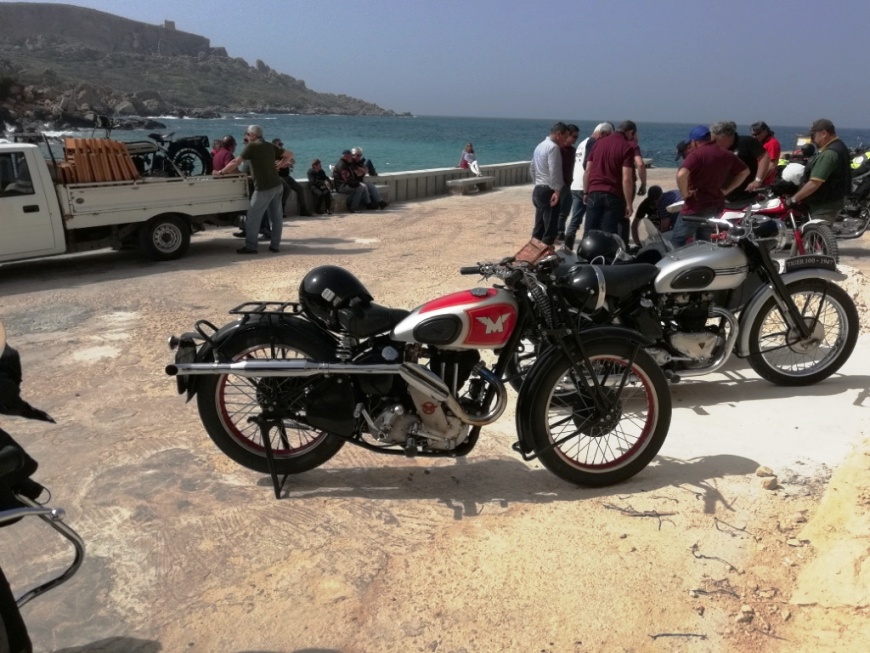
Dahlet Qorrot, with food wagon
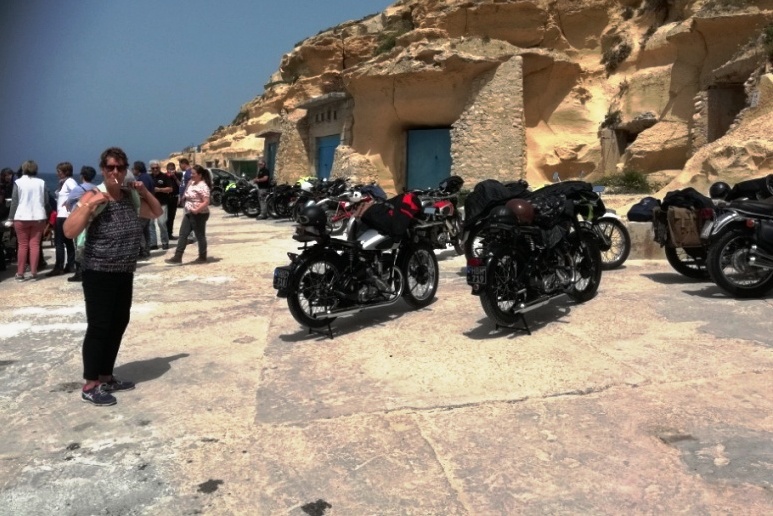
Senior management at Dahlet Qorrot, with a well earned
FAG.
The weather of course was typical late April in Malta, clear blue skies, 22 degrees and perfect for motorcycling. After repairing a puncture on one of the bikes we left for home struggling our way up the potholes to leave the bay. Back to the ferry and arriving back at base in the late evening.
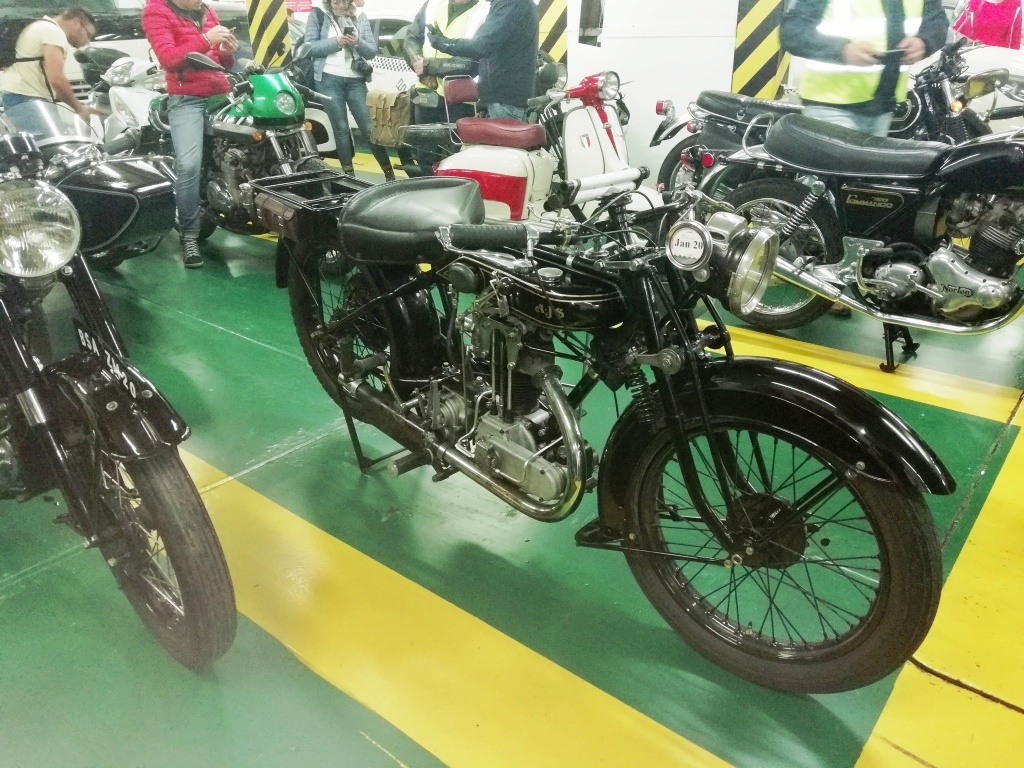
Bikes on the ferry
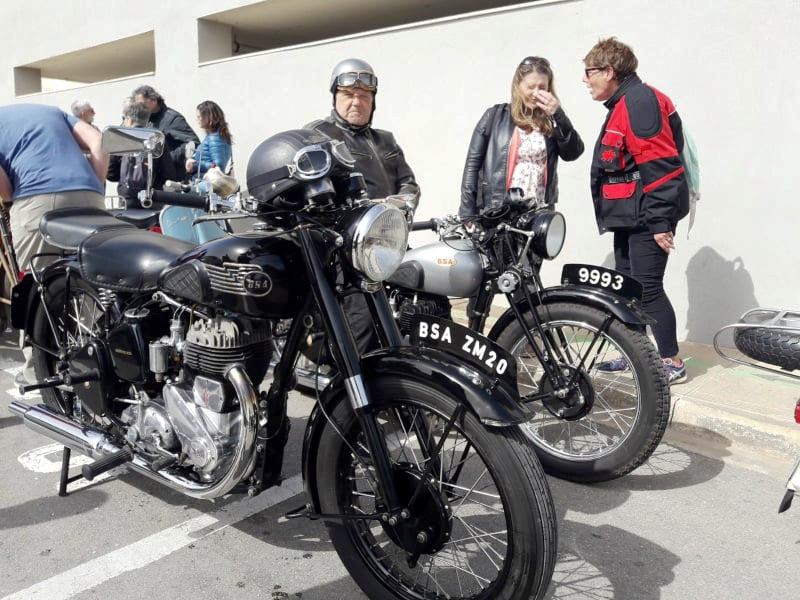
Who is that handsome chap in the pudding basin?
The next day we were to tour the southern part of Malta but
Denise and I decided that we would give that day a miss and go
swimming instead. Wrong decision!!!!!
We came off the beach Denise slipped in the hotel lift
and broke her femur and a rib so we had an extended holiday of 5
weeks while she recovered enough after an operation to be able
to fly home. One year later after another operation she
is finally mobile using one crutch and appears to be on
the mend.
Despite
that it was an absolute delight to be with the friendly Maltese
people who gave us every help and encouragement to take part.
Pat Davy's A bike for the time of life - Part Two
The little Honda arrives at its new home and raises the
question of where to house it. The Garage is pretty full of
Morgans and sidecar outfits, the space for another solo
exists but has awkward access and this bike is seen as a
regular user. So it's a little reshuffle in the Museum to
make room. As I wheel it in to introduce it to the other
occupants I swore I saw my racing Honda (4 1sts, 9 2nds & 5
3rds) turn its handlebars away in disgust at the prospect of
having a geriatric grey porridge bike bearing the Honda
badge as a bed fellow. The Morini didn't look too pleased
either sensing its days were numbered and in protest dumped
its brake fluid on the floor.
Some of you will think that what I am about to reveal is sad
and probably reflects the second part of Steve Parrish's
quote. On the acquisition of an addition to the Collection
it is customary for me to conduct a period of bonding. This
requires me to be seated on my favourite stool obtained from
Machine Mart and equipped with a gas strut to raise and
lower the seat and four coasters for moving around, it also
has large tray as its base used for spanners, tools etc. A
kind of Museum Mobility Scooter. The ritual is best
performed in the evening before dinner and accompanied by a
suitable libation. The bonding process involves me getting
to know and understand every minute feature of the new
purchase. This is often aided by Handbook 'spec' sheets etc.
tankful will go further than I have stamina for in one bite
these days. OK so that's a pretty ordinary spec' but what
does it look like? Go to the front cover of the latest
(April) VMCC Journal and we see the latest Royal Enfield
Interceptor. The silhouette is virtually the same the only
differences apart from physical size are that the Honda does
not have an oil cooler but it does have mudguards that work
and it's silencers are horizontal in fact a traditional
British Classic shape.
To business; we eventually repaired to the
garage where he had a nice original example of the CD250U.
The seat he wanted to sell was rough, that is the base had
been repaired but was sound although the new seat cover had
been attached by a primate. I tried to buy the original seat
from his Honda but he would not budge so I had to negotiate
a swap with my old seat. Well it all came out satisfactory
and we returned back down the A5 with a serviceable base and
foam and minus the seat that came from my Honda plus a bit
of cash.
Off to see Mr Leighton in the heart of
Birmingham for 'a proper job' seat covering. I left a copy
of the Honda Sales Leaflet with him so he had a visual of
the finished job. He said 4 weeks as he was extremely busy,
the place was full of Vincent seats the VOC spares scheme
must be swimming in money. To my amazement he telephoned two
days later to ask if I wanted the Honda logo printed on the
back and closed the conversation by the throw away comment
'Oh it'll be done by the end of the week' True to his word
it was and what a beautiful job worth every penny and more.
The bike was completed to original spec, Ann had the seat of
her desire and my cup runneth over.
